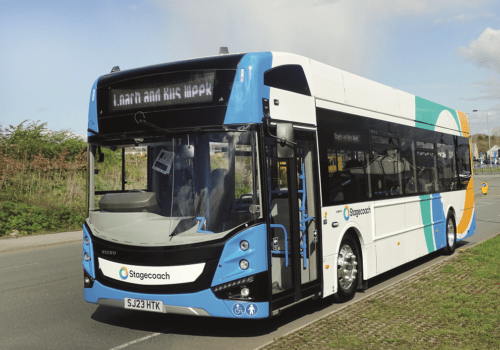
The Volvo BZL is about to become a familiar sight around the UK as significant orders start to be delivered. Richard Sharman takes a look at the MCV-bodied single deck variant, which forms part of a 225-vehicle order for Stagecoach
When a global brand launches a brand new zero-emission electric bus that can be utilised in multiple markets, it is a milestone. We have seen hybrid Volvo buses on the streets of the UK and Ireland for many years in the the form of the B5LH and the integral 7900H single decker. The latest offering is the first fully zero-emission offering from the Swedish manufacturer, and one without an internal combustion engine (ICE) option, something that operators of all sizes have come to know and love since 1971 when Volvo, originally under the Ailsa Bus name, came to the UK. So in that sense, it has high expectations to uphold.
Quality, reliability, efficiency
The new e-bus was launched in September 2021, with operators and the press getting their first look at the bodied product in December of that year, in both double- and single-deck form, as the chassis has been designed to be fitted with both body types.
Talking at the time of the launch, President of Volvo Buses Anna Westerberg said: “We are committed to leading the transformation of our industry towards a more sustainable future. With the launch of the new Volvo BZL Electric, our ambition is to offer the world’s most responsible electric bus systems. We do it by focusing on sustainability, safety and reliability.
“With the new BZL Electric we offer a global platform for clean, silent, and energy-efficient public transport to meet the rising demand on important markets that are ready for the shift to electromobility. We have a lifecycle perspective and take responsibility for the environmental impact of our products, from the cradle to the grave. This means we ensure that materials, manufacturing, operation and recycling meet the highest environmental standards.”
[…]By subscribing you will benefit from:
- Operator & Supplier Profiles
- Face-to-Face Interviews
- Lastest News
- Test Drives and Reviews
- Legal Updates
- Route Focus
- Industry Insider Opinions
- Passenger Perspective
- Vehicle Launches
- and much more!


